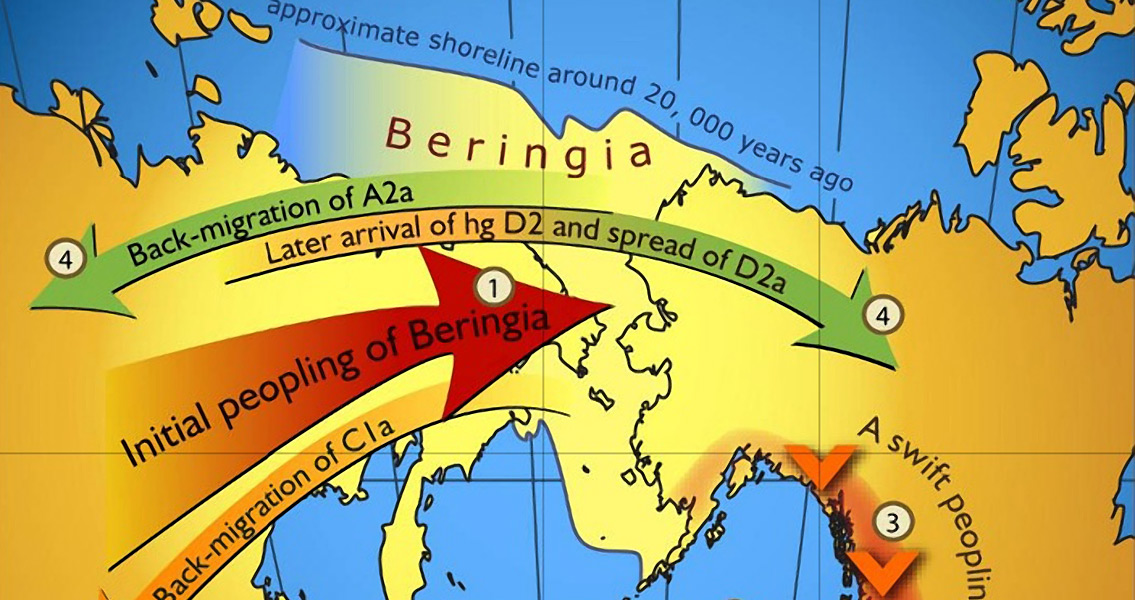<![CDATA[Just how the Americas came to be populated with humans has long been a subject of debate. The most widely accepted theory is that some time before 14,000 years ago, groups of humans crossed from Siberia to Alaska using a land bridge that spanned the Bering Strait. Beginning in the 1990s, however, a small, but very vocal group of researchers began to challenge this widely accepted argument. This group argued that North America was first settled during the Upper Palaeolithic by people from Europe moving Westward through Greenland via a glacial ice bridge that connected the two continents. Now, this competing ice bridge theory has been definitively challenged by new research. Professor of Anthropology at the University of Missouri Michael O'Brien and his colleagues have dealt a significant blow to the ice bridge argument. One of the most crucial pieces of evidence used to support the ice bridge theory comes from Chesapeake Bay. In the 1970s, a fishing vessel named the Cinmar, operating off the coast of Virginia, pulled up an ancient stone blade and a piece of an ancient mastodon skeleton. As inorganic objects cannot be radiocarbon dated, scholars correlated the dates of the blade with those of the mastodon, resulting in both objects being viewed as over 22,000 years old. "For more than two decades, proponents of the ice bridge theory have pointed to similarities between North American stone blades such as the one allegedly dredged from the Chesapeake and blades left by Solutrean foragers in western Europe," said Professor O'Brien, in a statement to the University of Missouri News Bureau. "We know, however, that Solutrean culture began around 22,000 to 17,000 years ago, which is later than North American dates pointed to by ice bridge theorists as proof that Solutrean people populated North America. That includes the date from the Cinmar mastodon." Importantly, O'Brien and his colleagues highlight that there is no first-hand accounts from any of the crew of the Cinmar who recovered the blade or skeleton. All published accounts of the finds, moreover, were written by proponents of the Solutrean hypothesis. None of these accounts took into account the information gathered by the ship's captain. "While the interview [with the captain of the Cinmar] indicates that the Cinmar captain took detailed notes, researchers never indicated that they actually observed the charts," O'Brien said. "In fact, captains keep 'hang logs' in which they record readings when they hit obstructions on the ocean floor. We reviewed countless snag reports from the Bay and the time frame when the snag should've occurred and didn't find anything to corroborate the story. One of the most famous snags of all time--when the crew pulled up a mastodon--and it's just not reported." Intriguingly, the Solutrean hypothesis is very unclear about the origins of the ship itself. O'Brien's research team found discrepancies in photographs of the Cinmar and the reported size of the ship. All these inconsistencies indicate contradictions in the Europe-North America ice bridge theory. "Until inaccuracies are cleared up, there really is no reason to accept the find as evidence of anything connected with the early peopling of North America," O'Brien concluded. For more information: www.sciencedirect.com Image courtesy of Wikimedia Commons user: OgreBot]]>
Theory Of How America Became Inhabited Challenged
